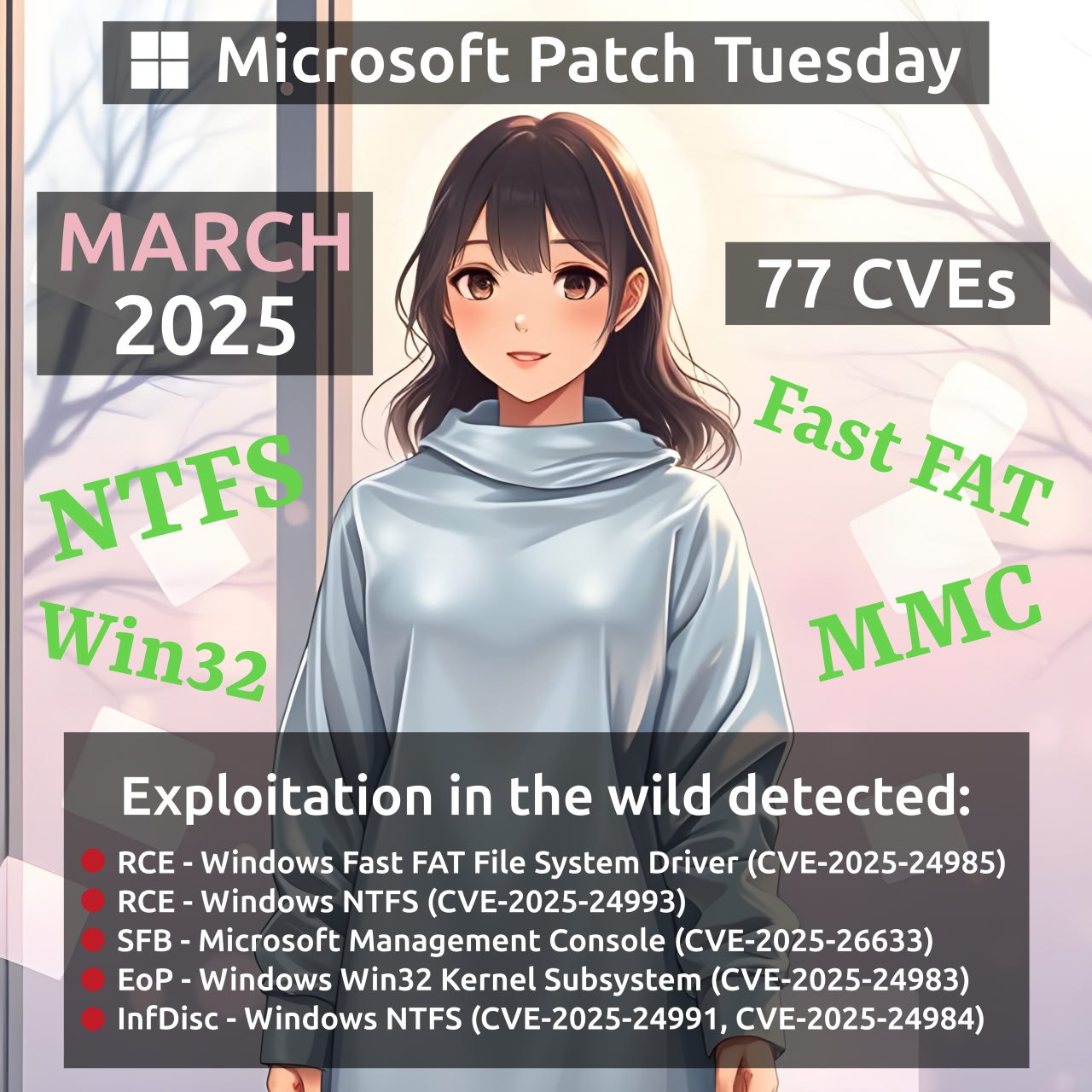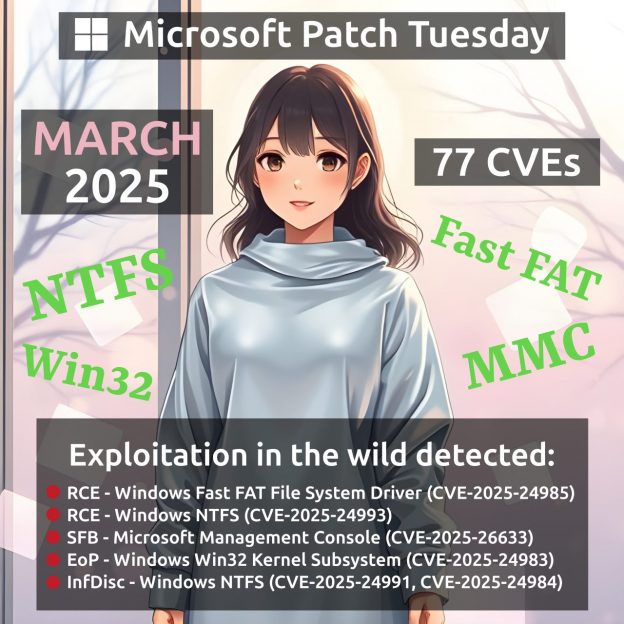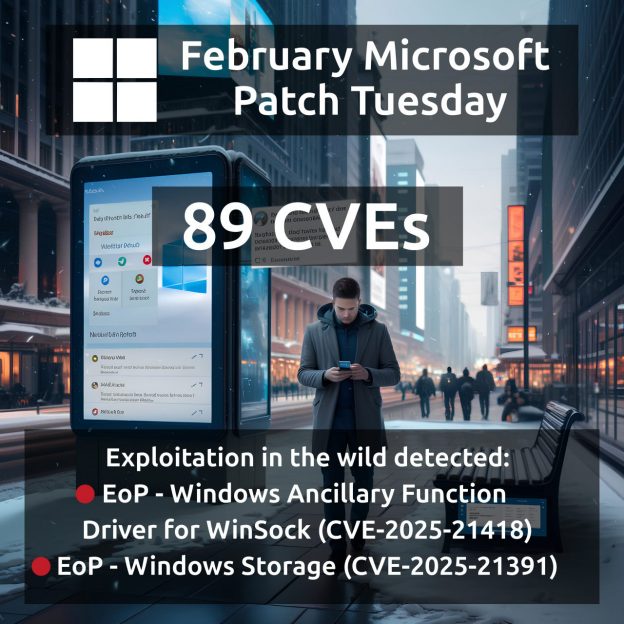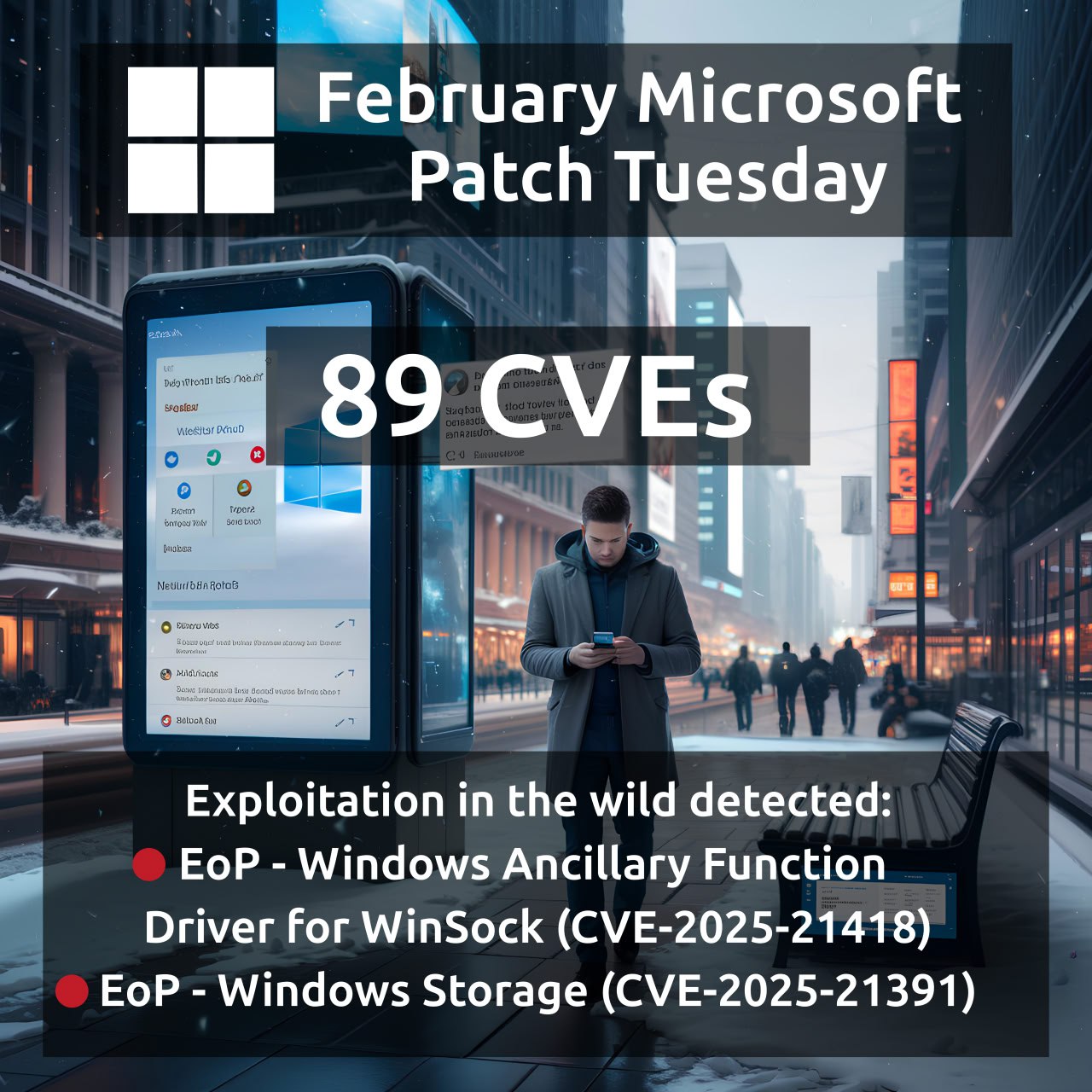
March Microsoft Patch Tuesday. 77 CVEs, 20 of which were added during the month. 7 vulnerabilities with signs of exploitation in the wild:
🔻 RCE – Windows Fast FAT File System Driver (CVE-2025-24985)
🔻 RCE – Windows NTFS (CVE-2025-24993)
🔻 SFB – Microsoft Management Console (CVE-2025-26633)
🔻 EoP – Windows Win32 Kernel Subsystem (CVE-2025-24983)
🔻 InfDisc – Windows NTFS (CVE-2025-24991, CVE-2025-24984)
🔻 AuthBypass – Power Pages (CVE-2025-24989) – in Microsoft web service, can be ignored
There are no vulnerabilities with public exploits, there are 2 more with private ones:
🔸 RCE – Bing (CVE-2025-21355) – in Microsoft web service, can be ignored
🔸 SFB – Windows Kernel (CVE-2025-21247)
Among the others:
🔹 RCE – Windows Remote Desktop Client (CVE-2025-26645) and Services (CVE-2025-24035, CVE-2025-24045), MS Office (CVE-2025-26630), WSL2 (CVE-2025-24084)
🔹 EoP – Windows Win32 Kernel Subsystem (CVE-2025-24044)









